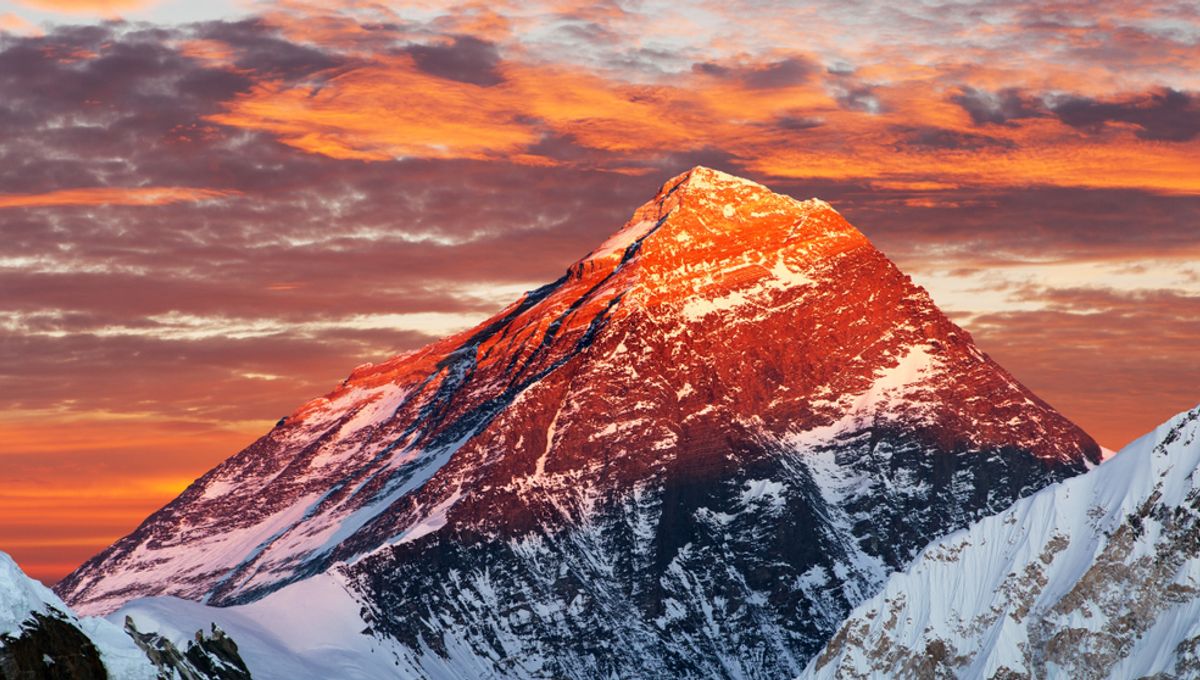
Standing at a height of 8,848 meters (29,029 feet) above sea level, Mount Everest is the planet’s highest peak (though not strictly the highest mountain). Having claimed over 300 lives so far, climbing this mountain is already a daunting concept, but even more so once you hear the eerie groans it makes in the night.
A Netflix exclusive docuseries, Aftershock: Everest and the Nepal Earthquake, details the aftermath of the 2015 Nepal earthquake that took the lives of nearly 9,000 people. Speaking on the series is Dave Hahn, an experienced expedition leader who has reached Everest’s summit 15 times.
As the sun sets on the mountain, Hanh speaks of the noises Everest lets out: “you can hear it popping, you can hear ice and rock crashing down in various places around the valley.”
Until the release of a 2018 study, no one knew why the mountain seemed to come alive at night, and what was causing such sudden and deafening sounds that could be heard from hundreds of kilometers away.
Setting out in 2017, a team of researchers from Nepal and Japan began studying the Himalayas’ glacial seismic activity. During the over one-week-long trek, the team made camp on an open glacier that was free of debris and noticed the strange noises that started at nightfall.
“We hear this loud boom,” glaciologist and lead author of the study, Evgeny Podolskiy, described in a statement at the time. “We noticed that our glacier is bursting, or exploding with cracks at night.”
Prompting further investigations by the team, the findings of their research concluded that the noises were caused by “nocturnal thermal fracturing”.
This describes the effects temperature changes have on the movements, and in turn sounds, made by the glaciers.
The researchers would work in t-shirts during the day, Podolskiy described, but as the sun set temperatures began to drop to around -15°C (5°F).
The debris-free glaciers, like the one the team settled on, are more exposed to the elements than their debris-covered counterparts, causing extensive thermal contractions as their surfaces cooled. This, in turn, causes near-surface fracturing on the exposed glaciers which make loud cracking sounds that echo through the mountain range.
Thin glaciers were also seen to be at greater risk of thermal contraction, while thicker glaciers suffered less thermal stress.
Despite the Himalayas being one of the largest stores of ice on Earth, the debris-covered glaciers, which make up about 70 percent of the glaciated Himalayas, are the least represented type in glacier seismology studies.
For this reason, it’s still unclear why temperature changes seem to affect the Himalayan glaciers more than glaciers in other parts of the world.
However, this work into the glacial Himalayas is helping scientist better understand how to monitor the behaviour of glaciers and to assess the damage state of ice, which could have implications for the way in which we track the effects of climate change on these immense ice stores.
Source Link: Mount Everest Makes Some Horrifying Sounds At Night